How many times can you fall in love with a place?
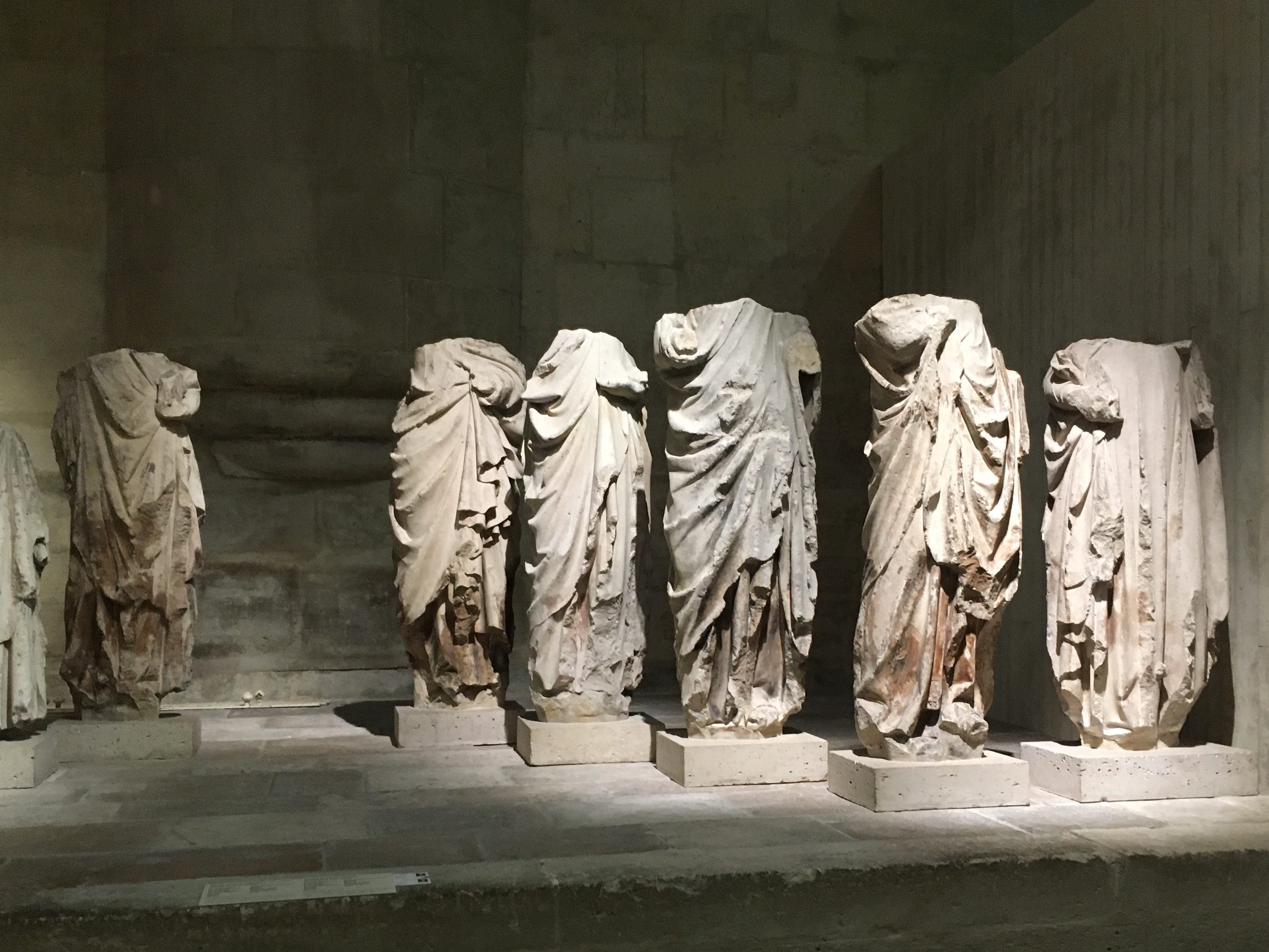
This time about a year ago, I was in Paris. Before I went, I wondered if the Paris I loved and remembered from earlier visits, especially my first, would be the same. How could it be? But a few decades isn’t a big deal to a city 2,000 years old. After all, its motto is fluctuat nec mergitur: “it floats, it does not sink.”
There were differences: cell phones everywhere, but fewer smokers, less car exhaust, and the street sweepers’ broom bristles are now plastic, not thatch, although water still flows down the gutters in the early morning. But the narrow streets, elaborate facades, wrought-iron balconies, sidewalk cafes with velvet-upholstered chairs inside and cane chairs outside, storefronts painted olive, forest green, smoky blue, maroon—still there. Mais, oui.


Admittedly, my brief stays there have been within the city’s inner circle, the part most ancient, most preserved, not where the high-rises loom, and my impressions, as of any place during a short visit, subjective, personal, superficial. What we take away from a place is what we’ve absorbed within the limits of our perception, memory, and expectations. (Never mind those limits imposed by the time, energy, and money we have to spend.)
When we’re someplace new, we can’t help seeking the familiar in the foreign, even as we wonder at the unfamiliar. Returning to a place, we look for our past in the present. The experience of travel is a jumble of sensory stimuli, intellectual engagement, emotional reactions. We busily try to organize it all as it comes at us into a sense of where we are, and who we are in relation to where we are. Afterward, the sorting and shaping continue as we recount and reflect on our experience.

Back in Paris this time, I just felt overwhelmingly glad to be once again in the presence of so much beauty. I couldn’t resist retracing some steps, but mostly I just went around breathing it all in.
My memories of my first visit are vivid. I had an immediate, surprising sense of being someplace northern. Something about the light, and the short days, I think. Given my fuzzy notions of latitudes, I didn’t realize Paris is farther north than Duluth. Fortunately, I didn’t encounter Minnesotan winter in Paris, but it was December, and the weather was dour, the air damp and chill. I don’t recall a sunny day.
None of that bothered me one bit; I was snug in a warm, lined trench coat from Bonwit Teller. It came from that department store’s Boston branch, which occupied a magnificent Back Bay Beaux Arts building, originally the home of the New England Museum of Natural History (now a Restoration Hardware store). The coat was an early Christmas present from my parents, whose generosity extended to not making a peep about my being away from home for the holidays. And I was just a few months out of college, on my first trip abroad, in one of the most beautiful cities in the world.

I was thrilled to be there and primed for novel experiences. I didn’t have to wait long. As I made my bleary way on the Métro to my hotel that first morning, I felt eyes on me: The chihuahua of the elderly woman seated next to me was steadily regarding me, its tiny head poking out of her handbag.
Tina was my travel companion. Having spent her junior year of college in Paris, she knew what to see, where to eat, and how to get there. Our tastes and perceptions have always been remarkably aligned. The same things strike us funny, things that might not set off a reaction in others (the word cruet, for instance) often to the point of tears, still.

We loaded up each day on croissants and jam courtesy of our hotel, then sated ourselves on museums: the Louvre, the Cluny, the Jeu de Paume, the Marmottan … We walked for miles each day, and took the Métro, but never thought of taking a taxi, even when we changed hotels mid-trip. (Lugging our suitcases along, we fantasized about the “luggage walk” as an Olympic event.) Around four in the afternoon, we’d plop down into one of those cane café chairs for hot chocolate and, of all things, a soft-boiled egg. In fact, it was the perfect tide-me-over-to-dinnertime snack. I can still see the waiter expertly and simultaneously pouring a stream of chocolate from one pitcher and hot milk from another into a china cup.
Two hungry young women who’d been on the go all day, we enjoyed our evening meals. At one classic brasserie (that is, black-vested waiters, white tablecloths, white-tiled floor, dark woodwork, mirrors on the wall), we started with a vegetable soup—never surpassed since—creamy, savory, no less delicious for being mysterious. What were we tasting? Leeks? Parsnips? Turnips? In other words, it was a quintessential example of traditional French cuisine, in which humble foodstuffs are transformed into sublimely satisfying dishes. (The inclusion of cream, butter, chicken stock, etc., doesn’t hurt.)

There was pizza on New Year’s Eve, which we ate in a sweet little restaurant within hearing distance of fellow Americans who marveled, loudly, at the sight of Parisians eating their pies with a knife and fork. Tina and I were smugly amused that we didn’t say things like that. Why pizza? We didn’t know that so many restaurants would be booked for private parties that evening. But it was good.
There was the dinner at a posh restaurant on the Champs Élysées, the kind catering to expense accounts, courtesy of a Parisian advertising colleague of Tina’s aunt, Jane Trahey, one of the original Mad Women of New York. The meal began with a showy pyramid of shaved ice with every fruit de mer from teeny periwinkles to beefy oysters scaling its slopes and proceeded to the presentation of an intact sea bass, wheeled up on a cart, poised for sacrifice on a chrome platform. The waiter lit the pyre of dried fennel beneath it; flames shot up with a whoomph. That was just the last of a series of shocks to the two proper couples enduring a chilly business dinner at the next table.

We had another kind of memorable meal at the Café aux Assassins. Although it felt as if it dated from the days of the Paris Commune, the rue Jacob restaurant had opened in 1948. When it closed 55 years later, the daily newspaper Le Parisien mourned the demise of “la célèbre institution de Saint-Germain-des-Prés,” as “ce dernier bastion de la chanson paillarde” (“the last bastion of the bawdy song”). At a diminutive desk by the door presided a stout and stolid middle-aged matron, very non-paillarde, wearing oversized glasses with blue lenses and a stiff platinum-blonde bouffant hairdo. The place was crowded, but we sensed that crowded or no, if she didn’t like the looks of you, there would never be a table pour vous.
We were rescued by a party of jovial working men who waved us over and made room for us. They were a good-natured, welcoming bunch of older guys enjoying their food. Wine bottles circulated freely around the table. It dawned on me that, just like Americans, French people might mispronounce and slur their words, particularly when they got tipsy. I don’t remember what I ate, and most of the talk, possibly bawdy or not, blew right over my head. It didn’t really matter. It was a moment of fraternité.
Last but not least, Paris was where I first tasted clementines. We bought them from the market stalls along the rue Mouffetard, the oldest street in Paris, at the end of the day. In the famous l’heure bleue, they glowed, beside bunches of brilliant orange calendulas.

From this account, it might seem that I ate my way through Paris, to the exclusion of absorbing much else, but I also drank in the art, architecture, history, landscape, and general élan of the city. What I saw and felt settled deep in me and has informed me ever since. For a long time in my dreams, I was back there.
When I arrived in Paris last fall, I was just as ready to gobble it up. Thanks to that technological wonder the smart phone, it’s way too easy to take pictures. I shamelessly indulged my desire to photograph everything: beautiful storefronts, old courtyard doors, the skinny metal chairs in the parks, the sturdy elderly women in their skirts and nice shoes (one I saw in heels, pushing a walker, with a little dog on a leash), children, flowers, trees, cafés, the light, the Velib rental bikes. (The human-powered are yellow-green, the e-version, an elegant green-blue; their French riders also smartly dressed.) My excellent travel companion this time was exceedingly patient about the frequent stops and starts.







Paris and me, we click. I admire the precision and style Parisians bring to what they do, their aesthetics, sense of color, nuance, presentation. Even a two-euro coffee was served to me in a nice china cup and saucer, with a small glass of water, a little napkin, an elegant paper packet of sugar.

I didn’t encounter the rude, snooty Parisians that tourists complain about. I liked that when I walked into a shop, the first order of business, before any transaction, was to exchange bon jours. I was grateful to the Métro teller who helped me with a crumpled ticket; the waiter who was so pleased when I liked a wine he’d served me; the courteous clerk who so kindly assisted me in selecting just the right present for a friend; another who gift-wrapped a modest purchase. There was the restaurant owner who remembered us days later; the friendly woman in the épicerie where I assembled a delicious dinner to eat at our hotel when we were too pooped to go out. And all the people who graciously let me fumble my way through a bit of French.



I didn’t chase after my past on this trip. I went back to the Musée Rodin; when we went there, Tina and I never got past the gardens. The grounds were free, and I think we didn’t want to pay (some very modest) entry fee to the museum. Besides, the brooding, romantic atmosphere of the gardens appealed to our brooding, romantic selves. The bare trees brutally cropped, nary a person in sight—you half-expected to see Kaspar Hauser, from the gothic Werner Herzog film of that name, scurrying down the path.

This time the grounds were full of sunlight and flowers and fellow tourists. The museum, an 18th-century rococo mansion that had been Rodin’s home for the last decade or so of his life, had had a major facelift a few years earlier, and every surface—the black-and-white marble tiles in the grand foyer, French windows, glass cases, crystal chandelier, parquet floors, bronze sculptures—was gleaming.

I strolled up and down the rue Mouffetard again. If it seemed more upscale than I remembered, it was no less tantalizing. The shops were luscious, selling fresh figs, apples, cyclamens and heather, wine, chocolates, cheese, pastries, paté, pizza al taglio. The ice beneath fish filets vaporized; bees daintily sipped glazed fruit tarts as humans nearby sipped apertifs.



I went back to Notre Dame. Years ago, Tina and I had joined the throngs shuffling around the interior on Christmas Eve. Of course, now entry is interdit. Plenty of us shuffled around the exterior this time, awed by the monumentality of the ongoing restoration task. The ravages of the devastating 2019 fire were virtually invisible behind acres of scaffolding. It was oddly fascinating and heartening to see this beloved landmark undergoing painstaking, mind-blowing repair. And trust the French to tell that story with finesse.
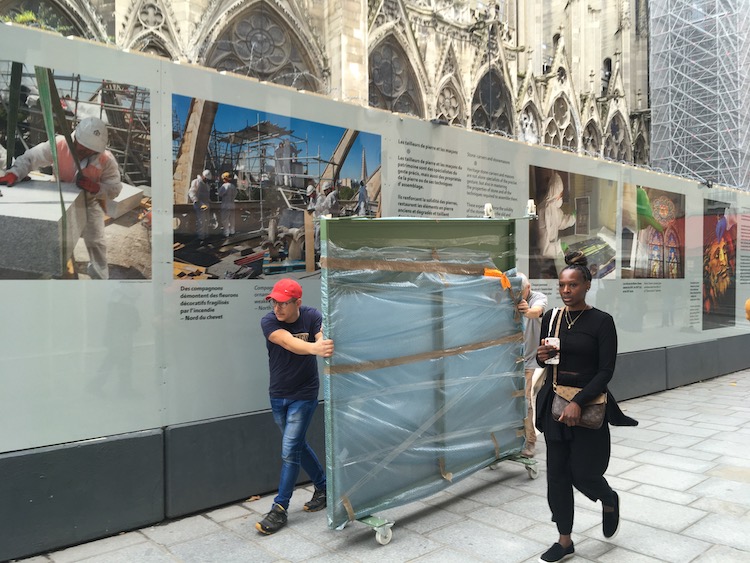
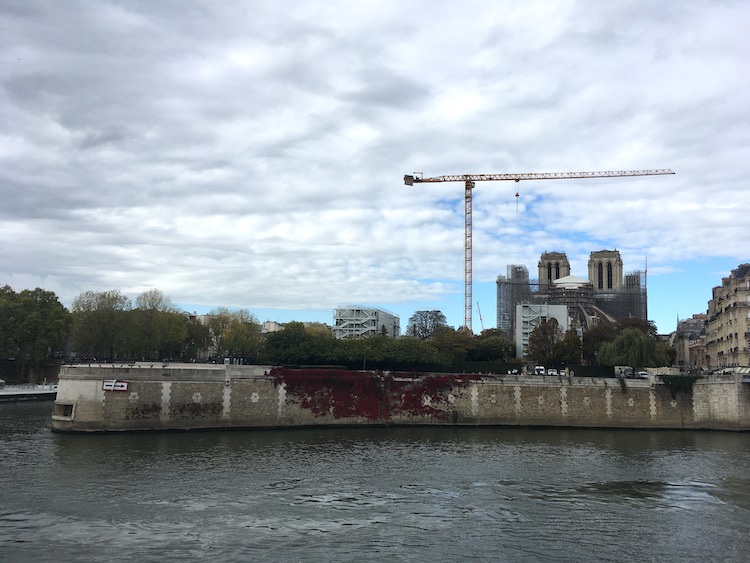
I went to plenty of places new to me: the Musée d’Orsay, the Marché aux fleurs, Sainte Chapelle, the Jardin des Plantes grounds and the Natural History Museum there. When I got home, I realized that a photograph I’d taken during my second visit to Paris was of the flower market, but from nearby subway stairs. I’d missed it somehow back then. And I wondered why I had never gone to Sainte Chapelle; it’s such a major attraction, and in the centre ville, hard to miss. This trip, I knew better. Thanks to Professor Brigitte Buettner’s “Age of Cathedrals,” a Smith College course I’d taken as a community member in 2020, I was prepared to be awed, and I was. Ditto the Musée d’Orsay (the Rosa Bonheur exhibition alone!), et al.





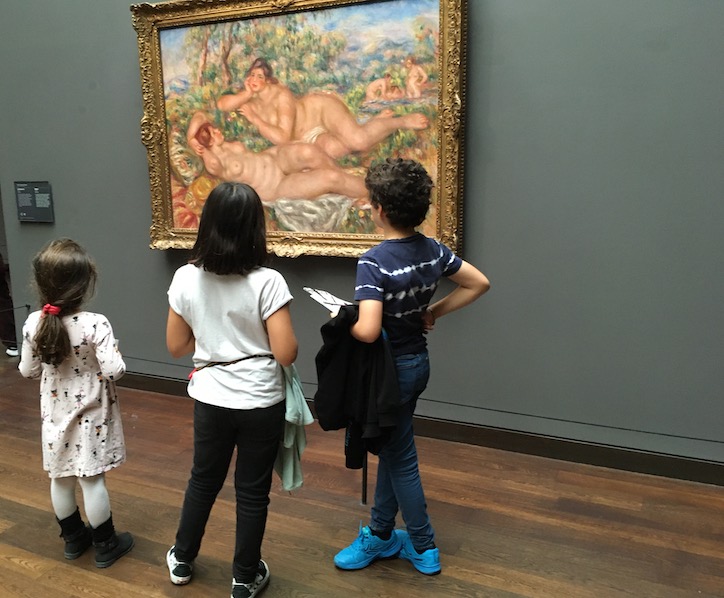
I ate well this time around, too. Maybe it’s the peasant in me, but one of the meals I most enjoyed was my first of the trip, a simple, made-to-order jambon beurre: a fresh baguette, crisp on the outside, chewy on the inside, sliced lengthwise, luxuriant with butter, filled with ribbons of ham. It cured my jet lag; that, and a morning spent in the sunny Jardin des Plantes. A bowl of onion soup a few days later was a close second. I was on the go again in Paris.
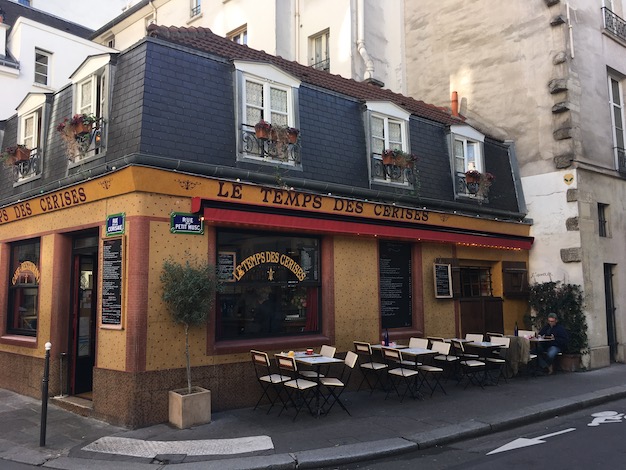
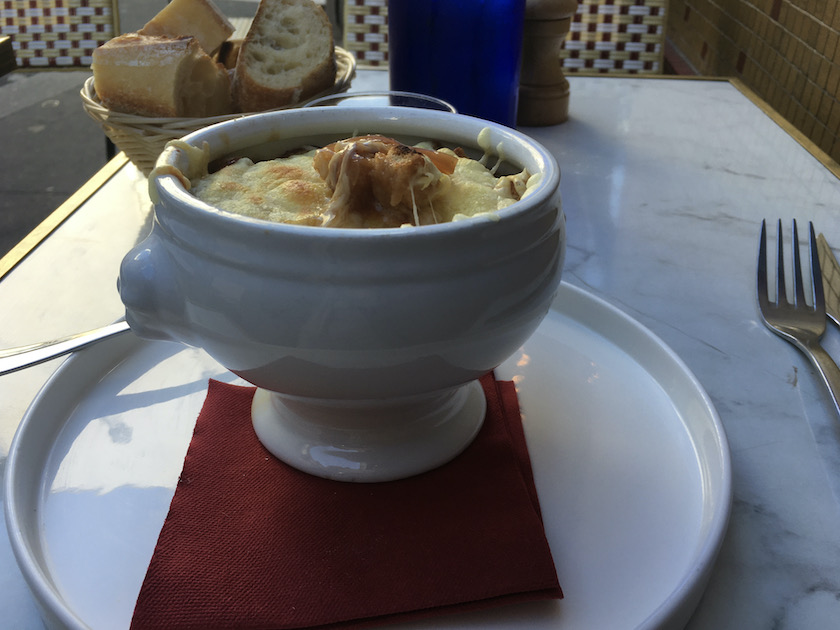
On one of the last, beautiful balmy days of our visit, fully embracing my tourist status, I glided down the Seine on a bateau mouche. It was dreamlike, slipping past majestic Lutetian limestone buildings with all their furbelows, gilded by late-afternoon sun, and serene, despite my being one of many sitting thigh to thigh on rows of benches. By that time of day, the sightseers around me, like me, seemed to have had their fill of rushing around and were content just to sit and absorb the scene.

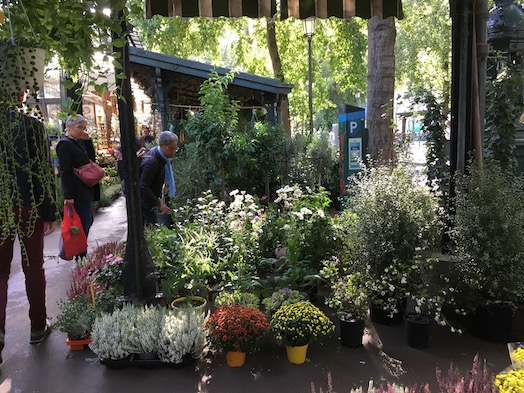


When I got home, I vainly attempted more than once to write a post about my sentimental journey, but I was still absorbing it all, and I’m not done yet. (I did write about some Paris gardens and places I visited for GoNOMAD. You can go here to read it.)
As well, I was stymied by the sense that everything I could say had already been said, and said better. But looking at my photographs, I’m there all over again, and the impulse to share what I saw prevails. (I notice that, after thinking I had nothing to say, I’ve managed to come up with quite a lot.) Is there more to see? Given the chance, would I go back? In a heartbeat.

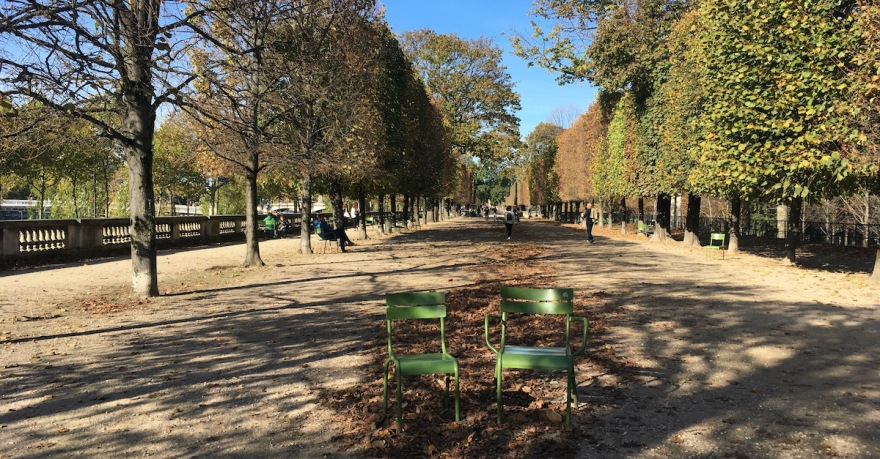
Paris en rose !
Merci.
LikeLike
Merci à toi! Coming from a Frenchman, your appreciation is most gratifying. And excuse-moi, if my impressions seem those of an American in Paris–which I was, and hope to be again.
LikeLike
Nice piece on Paris. I love the nostalgic, long-ago–yet so vivid–recollections with pal Tina. And the photos–quietly, wryly, respectfully observant–complement perfectly.
LikeLike